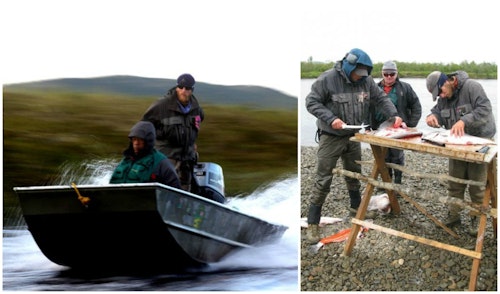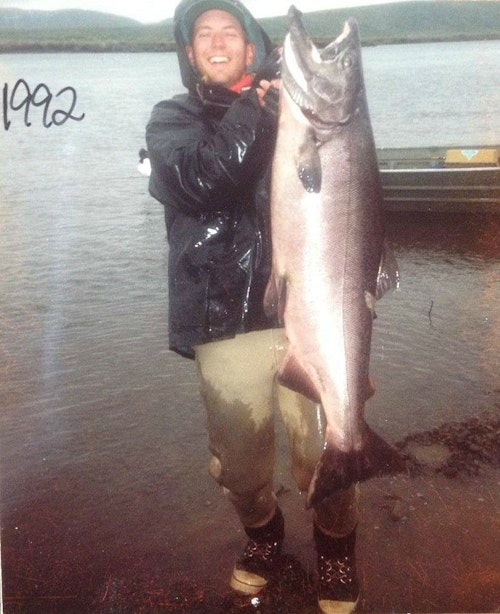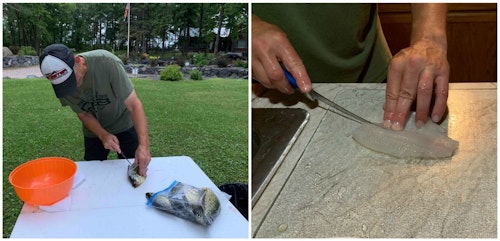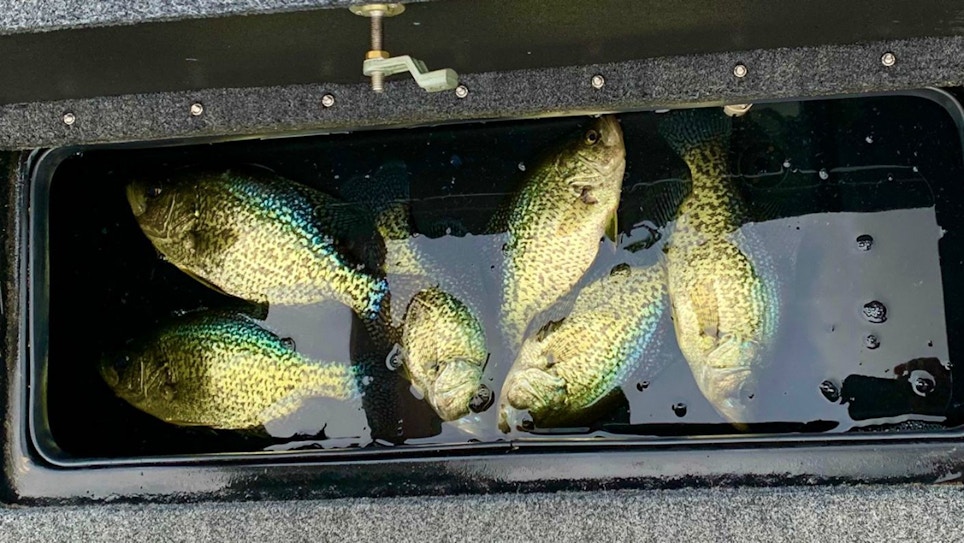I’ve been a diehard angler since age 10, but I didn’t find out about how to bleed fish until the spring of 1992 — I was 27. I’d already spent five summers as a fishing guide in northern Minnesota and southern Ontario, but somehow the subject of bleeding fish never appeared on my radar. While it’s true I was (and am) primarily a catch-and-release angler, I’d cleaned hundreds and hundreds of fish through the years.
In 1992 I landed a guiding job with Bristol Bay Lodge in southwest Alaska. Many of the clients brought home boxes of filleted wild salmon they caught personally, and it was on the shore of the Nushagak River that a senior guide explained the value of bleeding fish prior to cleaning.
“You want to bleed fish for two reasons,” my mentor explained. “First, we don’t have livewells in our john boats, and you’ll keep the caught salmon in the back of the boat, right where you stand to drive the outboard. A fresh 20- or 30-pound king (chinook salmon) that’s flopping around in the boat can knock you off your feet and into the river. Not good. So you want to kill salmon before laying them at your feet. But to ensure blood-free fillets later when you clean them, you first want to bleed fish in the river.”

Each guide developed his own system; here was mine in 1992:
- Net a salmon and confirm that the angler wants to keep it.
- Unhook the fish and take photos of the angler with his or her catch.
- Place the salmon back in the net and pin the fish to the boat floor.
- Strike the salmon on the head right behind the eyes with a heavy hook cutting tool to stun the fish.
- Using a long-nosed pliers, reach inside the salmon’s gill cover and grab as much gill raker as possible and then tear it out.
- Immediately lift the netted salmon over the side of the boat, allowing the current to take away the blood flowing from the damaged gill.
- When trolling for kings, one of the anglers in the boat would often volunteer to hold the net for a minute or two while I prepped lines and got them back to fishing. Then I traded rod for net and held it for another few minutes until I didn’t see any more blood leaving the salmon.
- When fishing from shore, it was even simpler because I could stun a netted salmon, remove a gill raker, then let the current flow over the fish in shallow water without hanging onto the net handle.
Later in the afternoon when it was time to clean all the salmon, the result was minimal mess and blood-free fillets. And happy clients.

Whenever possible, I bleed fish to ensure blood-free fillets. When I’m in my Skeeter multi-species boat, which has a livewell and aerator, I’ll keep fish alive until just before leaving the lake. Then I’ll stun fish and bleed them in the livewell (pulling the drain plug to let the blood/water flow from the livewell into the lake).

Bleeding fish while ice fishing can be a bit messier, but it’s still possible to do in a bucket filled with snow, or on the ice itself. In the latter case, I simply cover the blood-stained ice with snow before leaving for home.







